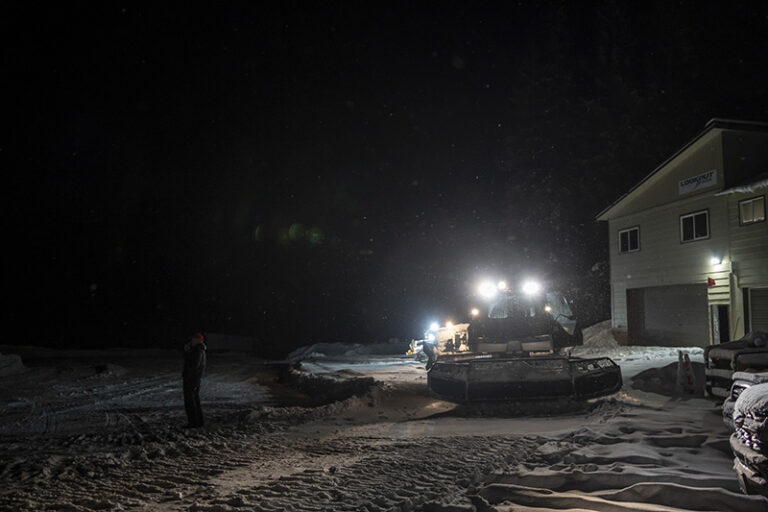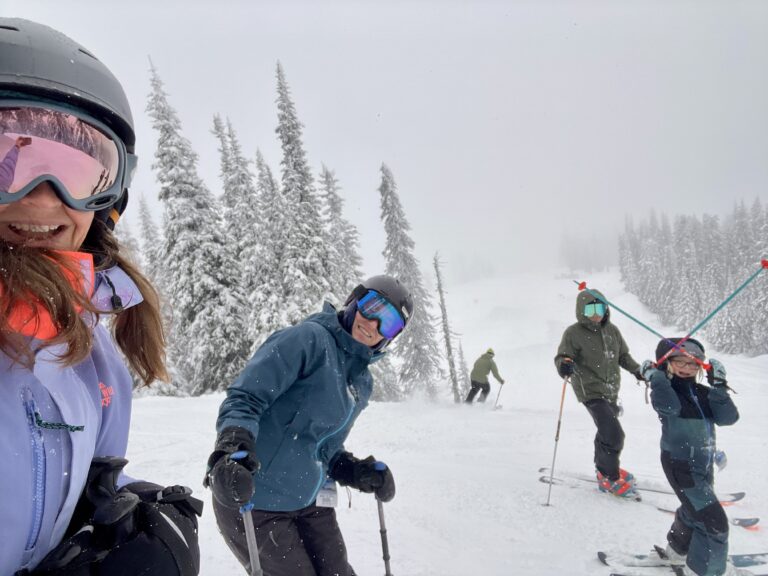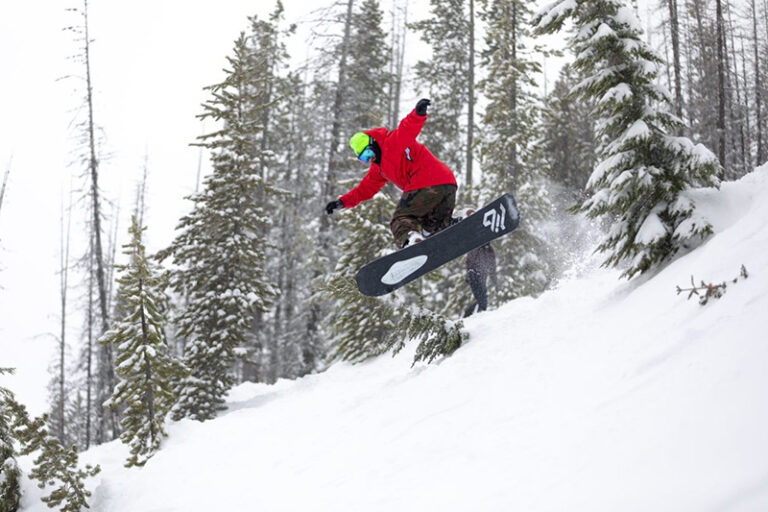The watersports wonder of wing foiling
Cover photo courtesy of Gwen LeTutour
There hasn’t been a whole lot of evolution in the wind sports industry over the last several decades. The ‘70s and ‘80s saw the emergence of windsurfing, and with it a collective culture of wind-bums who ascended upon legendary towns like Hood River, Ore.
At the turn of the century, kiteboarding came next out of Hawaii and significantly cranked up the adrenaline meter. While enticing and exhilarating, kiteboarding’s extreme nature was not as well suited for the masses. The need for multiple lessons and the potential risks involved created a large barrier of entry.
Windsurfing, while tamer than kiteboarding, had always been very technical and required significant wind to experience enjoyable speeds or the ability to track up-wind (tacking back and forth in a manner that allows you to finish where you started, as opposed to drifting down-wind). The barrier of entry was not as formidable, but unless you lived someplace with lots of wind, you’d spend a lot of days frustrated on the beach.
In recent years, two new developments have essentially bridged the gap between these two disciplines, and opened up a new world of possibilities for folks who live near less-windy bodies of water.
The first is the “hand wing.” Constructed in a similar fashion to kites, with an inflatable frame and a nylon canopy, these wings are lightweight, rigid, and collect a respectable amount of pull from the wind for their size. Completely free of any line or board attachment, the wing’s angle and position are controlled by the handles that line the wing’s center strut.
While these new wings were easier to manage than traditional board sails, and safer than modern kites, the problem of needing big wind still loomed. That’s where the “foil” has come in. Boat foils have been around in various forms for the last 100 years, but it’s only recently that people started to experiment with them in board applications.
Foils are an engineering marvel that, when given the right mixture of speed and resistance from the water, elevate whatever vessel they are underneath, creating a feeling of flying above the water. It also eliminates almost all of the vessel’s drag on the water, which means very little energy is needed to continue forward propulsion, whether it be the push of a wave or the pull of the wind.
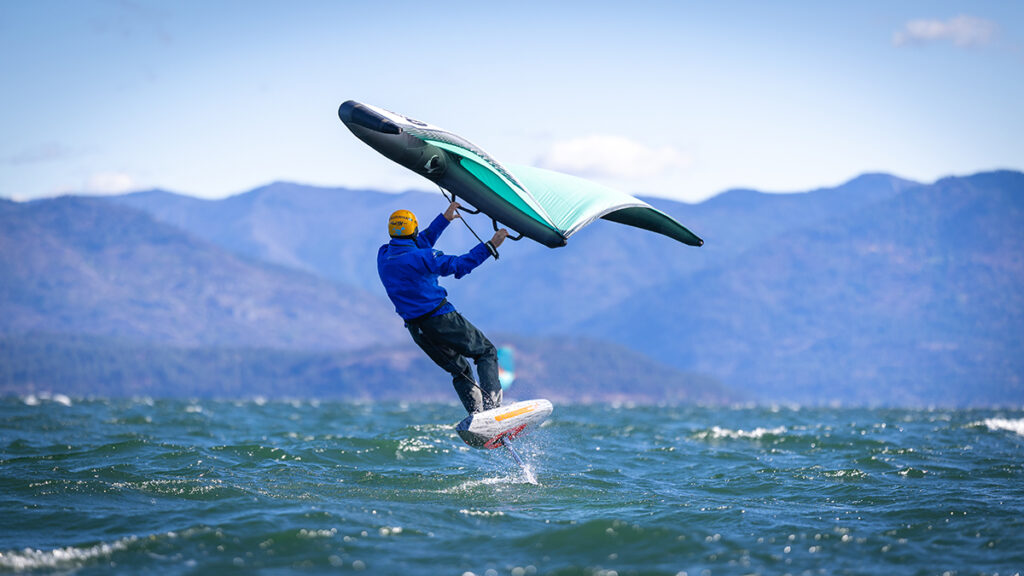
Getting Into Wing Foiling
As a person who’s tried both kiteboarding and windsurfing, wing foiling felt much safer to me than kiteboarding and “freer” than windsurfing with the wing being independent of the board. The same wind principles apply, so if you understand where the wind windows are and how to articulate a sail to maximize or minimize pull, the learning curve is rather quick.
The most challenging piece will come in mastering the foil. The best advise I got was to learn how to foil behind a boat first. Having to manage both the wing and foil at the same time can be difficult for beginners who have no experience with either. Getting on foil doesn’t take much effort or pull from the boat, but staying on foil is where you’ll have to learn how to make constant micro adjustments in weight distribution and foot position to maintain the foil’s flight.
You can also learn the hand wing skills independently by using a large SUP board instead of a foil board for your first on-water sessions. You won’t break any speed records, but you’ll learn the basics of hand placement and wing positioning, as well as tacking progressions. If you already own a SUP, you’ll only need to purchase a center keel so that you can track up-wind. Slingshot Sports makes a nifty adhesive keel called the “SUP Winder” that works on any rigid board.
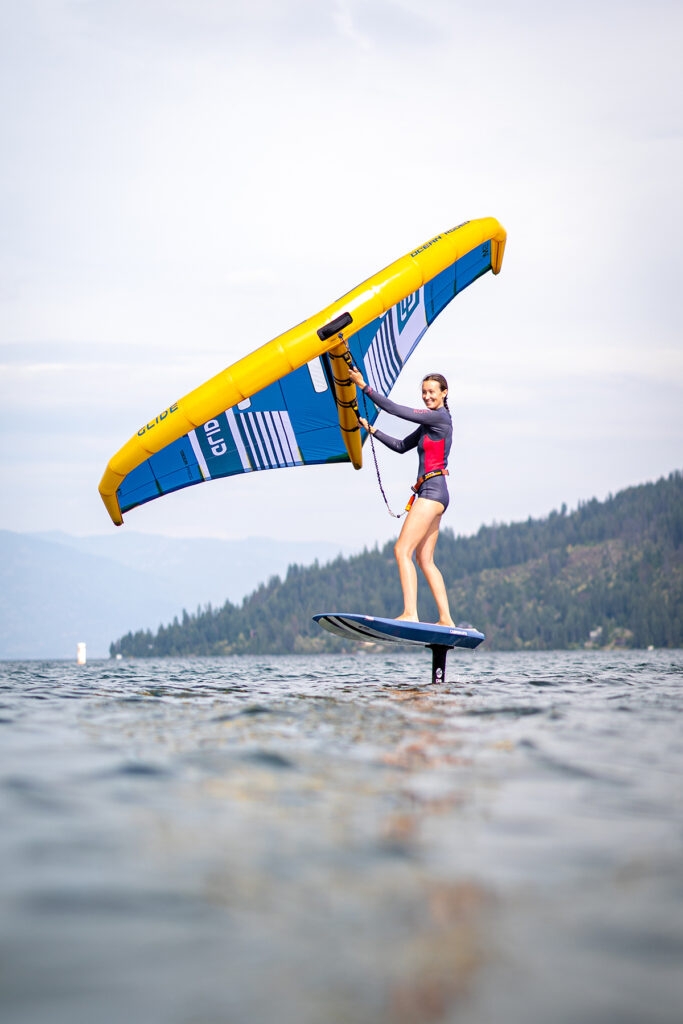
Where To Go Wing Foiling
Gwen Le Tutour is a Sandpoint City Beach legend. He and a small group of locals have set the tone for the emerging wing foil scene on Lake Pend Orielle. The lake’s sheer size gives it an advantage over other smaller lakes in the region when it comes to wind. The most consistent wind patterns happen in the spring and fall when high- and low-pressure systems are often cycling.
“I’m blown away with how foiling has made the most unexpected places become fun playgrounds for water sports,” says Le Tutour. “No need to be in Hawaii to have fun—it’s available to anybody, anywhere, even here in North Idaho.”
In addition to Lake Pend Orielle, many local riders make the journey to Sprague Lake, an hour west of Spokane. Sprague benefits from many of the same thermal weather events that Hood River has, giving it consistent wind year-round.
Getting the Gear
If you’re ready to purchase, Gwen owns and operates Wingfoilprocenter.com. There you can find everything you need to get started as well as links to his YouTube page that has tons of valuable information on gear, technique and locations. Gwen offers local lessons for any ability level in the summer at Sandpoint’s City Beach, with the priority of keeping it fun and positive. Additionally, Hood River, 4.5 hours southwest of Spokane, has several shops that can help guide your purchase.
Brad Naccarato is a Northwest native whose been contributing to OTO since 2012. Chasing trout, wind, waves, dirt, and IPA’s keeps him sane.











